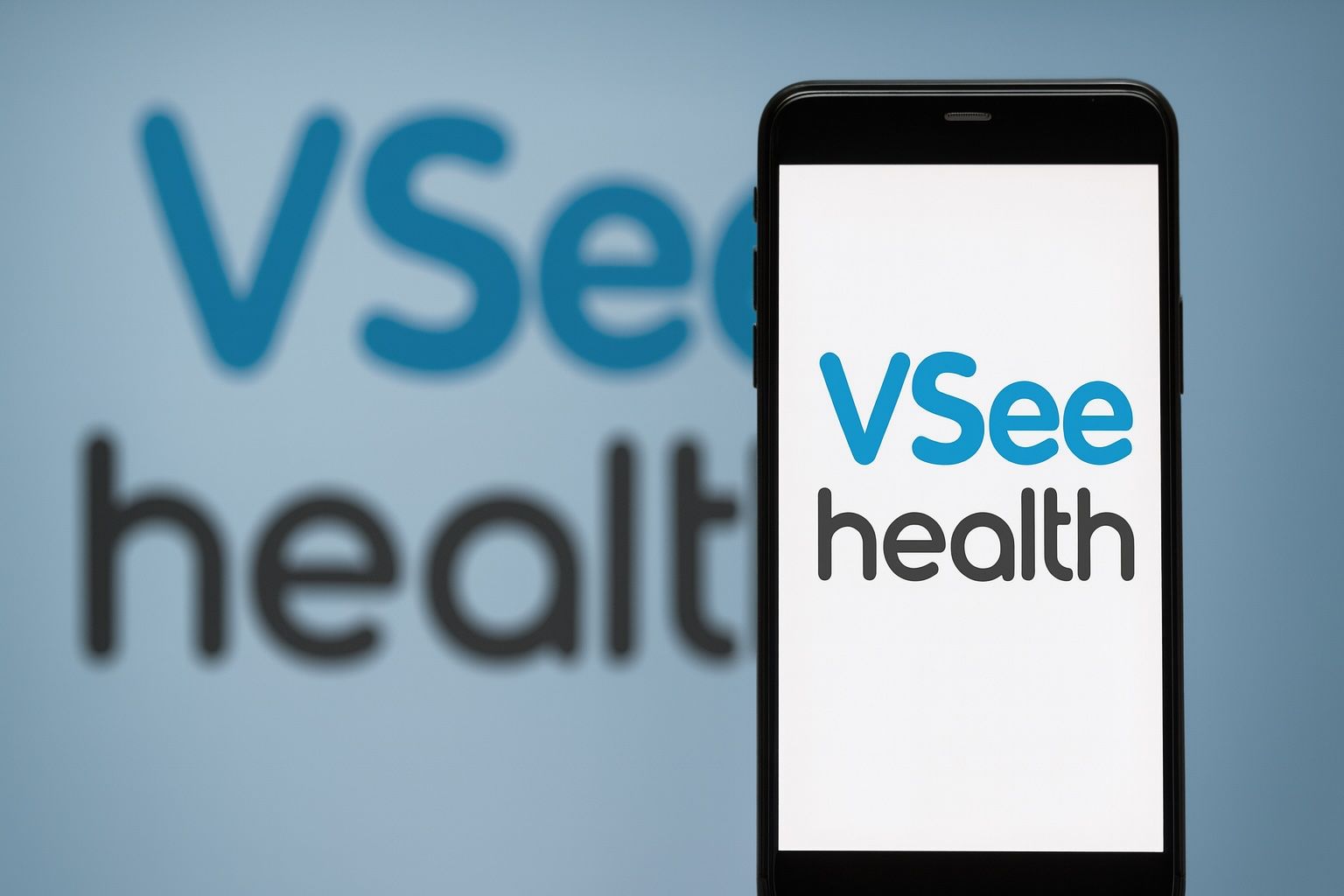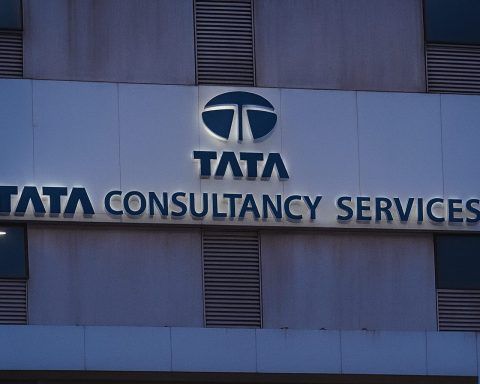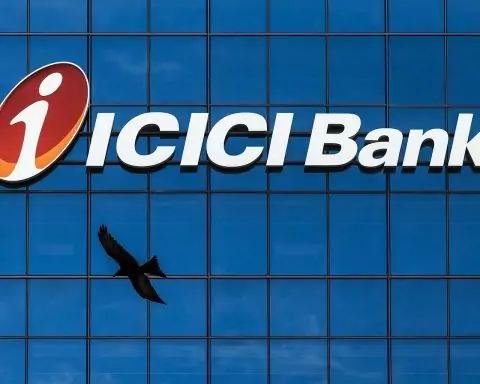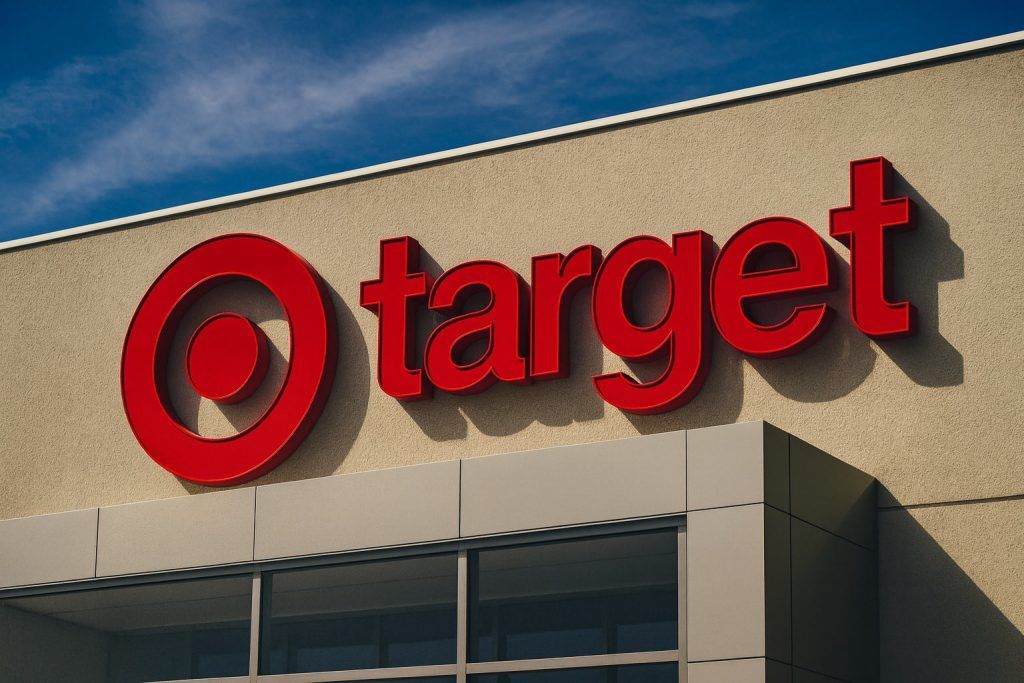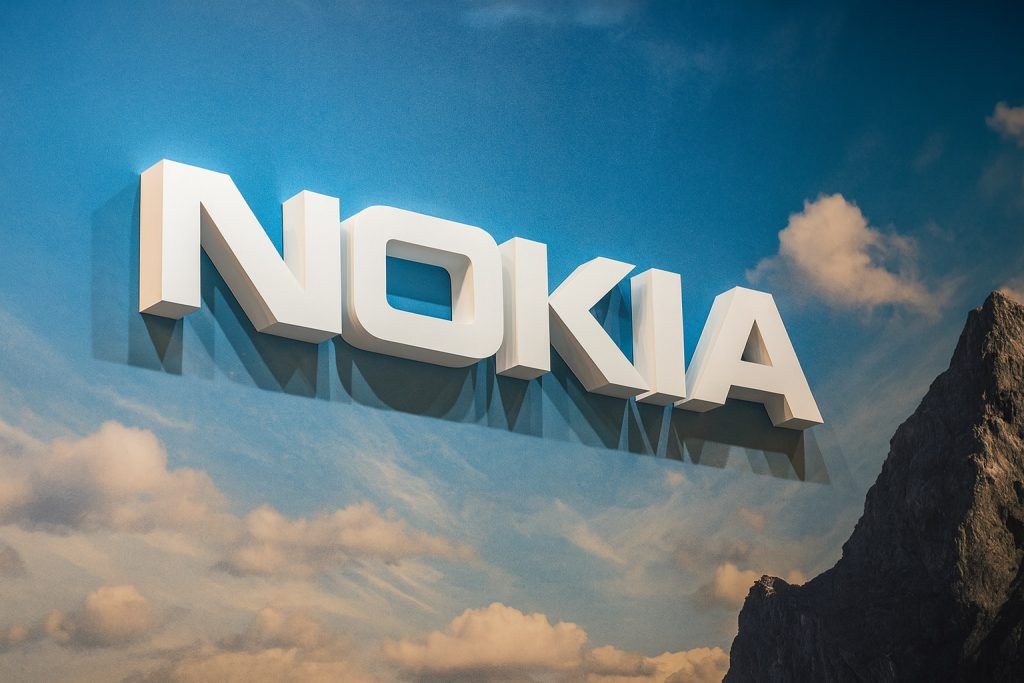- VSEE Stock Soars: VSee Health (NASDAQ: VSEE) shares spiked as much as 285% in pre-market trading on October 28, 2025 after a major government security clearance announcement [1]. The penny stock surged from around $0.62 to an intraday high of $2.52, before settling near $1.91 (+209%) by the close [2].
- FedRAMP High Authorization: The U.S. Department of Health and Human Services (HHS) granted VSee an Authority to Operate at the FedRAMP High level, allowing other federal agencies to use VSee’s telehealth platform for sensitive, secure applications [3]. CEO Dr. Milton Chen called it “a major step in expanding our government partnerships” [4].
- Trading Frenzy: The FedRAMP news unleashed extraordinary trading volume – over 156 million VSEE shares changed hands (vs. under 2 million on a typical day) as traders piled in [5]. The stock’s 52-week range (just $0.46 to $3.54) highlights its volatility [6].
- Back-to-Back Big News: This is VSee’s second huge spike in a week. On Oct. 21, VSee announced a “landmark” $10+ million teleradiology contract with a major hospital system, which sent shares up ~75% that day [7]. A few days later, VSee eliminated $5 million in debt from its SPAC merger, strengthening its balance sheet and bolstering NASDAQ compliance [8].
- Analysts and Outlook: Wall Street coverage is sparse, but one AI-driven model rates VSEE “Underperform” with a $0.50 price target, citing “financial instability and the risk of Nasdaq delisting” [9]. In contrast, at least one analyst has a bullish $5.00 target (Strong Buy) – an ambitious call given VSee’s micro-cap status [10]. Experts say the telehealth sector’s growth (~20%+ annually) could lift innovators like VSee, but caution that such penny stocks “can swing wilder than a kid on a sugar rush” [11].
Stock Price Surge and Recent Performance
VSee Health’s stock has delivered a stunning short-term rally. After closing at just $0.62 per share on Oct. 27, VSEE opened Oct. 28 with a bang – soaring well above $1.50 within hours and briefly touching $2.52 intraday [12]. By afternoon, shares were still up around 200% on the day, trading in the $1.80–$2.00 range. The one-day gain is remarkable for any stock, especially a small-cap telehealth firm. Even after pulling back to a ~$1.91 close, VSEE had more than tripled in value in a single session [13].
This explosive jump follows a week of positive catalysts for VSee. Just one week earlier, on October 21, the company’s announcement of a multi-year $10+ million teleradiology contract with a Level 1 trauma hospital network sent VSEE stock from about $0.48 to $0.80+ intraday [14]. That ~75% surge came on massive volume (226 million shares traded vs. ~0.7 million average) as retail traders caught wind of the “game-changing” deal [15]. After a brief cooldown in the mid-$0.60s, VSEE is now skyrocketing again on the latest news. The stock’s year-to-date performance had been deeply negative (down over 50% YTD prior to this week) [16], but these twin rallies have dramatically altered its trajectory.
Such sudden leaps underscore VSEE’s high volatility. The stock has a 52-week range of just $0.46 to $3.54, reflecting wild swings typical of micro-cap “penny” stocks [17]. Even after the current run-up, VSee’s market capitalization remains only around $10–$15 million – meaning small absolute changes in price translate to large percentages. Traders have been drawn to VSEE for its “first green day” momentum lately, but veteran market commentators warn that rapid gains can just as quickly reverse. As one observer quipped, “small-cap stocks like VSee… can swing wilder than a kid on a sugar rush,” with huge ups and downs on any news or setbacks [18].
FedRAMP High Authorization: Government Green Light for VSee
The immediate catalyst for VSee’s latest spike is a major federal security clearance that vastly expands the company’s potential market. Early on Oct. 28, VSee announced it has received Authority to Operate (ATO) at the FedRAMP High level from the U.S. Department of Health and Human Services (HHS) [19]. FedRAMP (Federal Risk and Authorization Management Program) is the stringent cybersecurity standard cloud services must meet to be used by U.S. government agencies. An ATO at the “High” level is the top tier of security compliance, required for handling sensitive data like personal health information. In practical terms, this means VSee’s telehealth platform is now approved for use not only by HHS but by any federal agency that requires FedRAMP High security [20].
For a telemedicine provider of VSee’s size, this is a significant validation and opportunity. It removes a huge barrier to entry for government contracts – agencies can adopt VSee’s technology without needing separate security vetting, which “directly removes a major procurement barrier for sensitive government healthcare workloads,” according to one industry analyst [21]. VSee can now market its platform across the federal government, from the Department of Defense to the VA or CDC, wherever top-level cloud security is needed. “With FedRAMP High ATO, agencies can deploy VSee for secure, real-world patient care – anytime, anywhere,” said Dr. Milton Chen, VSee’s CEO, calling it “a major step in expanding our government partnerships” [22]. In other words, this clearance opens the door to new federal deals that were previously out of reach.
VSee’s technology is built for exactly these kinds of mission-critical telehealth deployments. The platform provides enterprise-grade encryption, HIPAA compliance, health data interoperability (HIE), and supports hybrid telehealth workflows (mixing virtual and in-person care) with rapid multi-site activation [23]. A recent real-world trial by HHS showcased VSee’s capabilities: back in July, after a cyberattack crippled a hospital’s IT systems in the U.S. Virgin Islands, VSee was able to rapidly deploy a secure cloud telemedicine “bridge” that kept the only hospital on St. Croix operational [24]. VSee’s solution helped maintain emergency services and clear over 250 backlogged radiology studies within days [25]. That crisis deployment likely helped convince HHS of VSee’s reliability, leading to this FedRAMP High authorization.
Beyond this news, VSee is also advancing new initiatives like AIMEE, a program to bring AI-driven digital health infrastructure to rural hospitals [26]. These efforts aim to position VSee at the forefront of telehealth innovation – and now, with the federal government’s stamp of approval on security, the company has greater credibility to win contracts. “FedRAMP High ATO materially expands VSee’s federal addressable market and validates [its] security posture,” noted a GovCloud industry analyst, emphasizing the strategic importance of this win [27].
Recent Business Developments and Financial Moves
The FedRAMP clearance comes on the heels of other notable developments for VSee Health in October. The company has been working to shore up its financial foundation and capitalize on growth opportunities:
- New Teleradiology Contract: On Oct. 21, VSee revealed a “landmark” multi-year teleradiology services deal worth over $10 million with a premier hospital system [28]. Under the contract (which actually began service in June), VSee will provide 24/7 remote radiology reads across the client’s network of hospitals. Management says this deal will double VSee’s annual recurring revenue and could add another $5M if performance targets are met [29]. “Doubling our annual recurring revenue is just the beginning… [this deal] opens doors to a pipeline of future contracts with top-tier healthcare systems,” VSee’s Co-CEO Dr. Imo Aisiku noted optimistically [30]. Investors reacted with enthusiasm: the stock’s ~75% jump on Oct. 21 and heavy trading volume showed that the market sees this as a game-changer in establishing VSee in the tele-radiology niche.
- Debt Elimination and NASDAQ Compliance: Just two days later, on Oct. 23, VSee announced it had eliminated over $5 million in legacy debt carried over from its SPAC merger [31]. Wiping out this debt strengthens VSee’s balance sheet significantly for a company of its small size. More importantly, it helps VSee comply with NASDAQ listing requirements around shareholder equity [32]. (The company had previously faced a delisting notice for falling below required financial thresholds, but was granted an extension to remedy the situation [33].) VSee said the debt reduction has “increased creditor confidence and positions the company for sustained growth.” Co-CEO Dr. Aisiku cheered the milestone, stating “This is just the beginning of an exciting chapter for VSee Health” as the company moves forward on stronger financial footing [34]. With the debt gone and a major new contract signed, VSee appears to be addressing two key investor concerns: dilutive debt overhead and revenue growth.
- Latest Quarterly Results: In mid-October, VSee also filed its delayed Q2 2025 financial results (for the quarter ending June 30). The report showed $3.4 million in revenue, up 98% year-over-year, thanks in part to the acquisition of iDoc Telehealth and expanding services [35]. Gross margins improved to ~47%, and management pointed to “growing revenue and improved operational efficiencies” as laying a foundation for future growth [36]. Despite the solid revenue growth, VSee remains unprofitable (net losses persist), and the company’s cash burn and regulatory compliance costs are ongoing concerns. However, securing the Nasdaq extension until December and removing the $5M debt were crucial steps to stabilize the finances while VSee pursues new contracts.
In short, VSee Health spent much of 2025 in turnaround mode – restating old financials, cutting debt, filing overdue reports – and is now emerging with fresh momentum from new business wins. Investors are clearly rewarding these efforts, as evidenced by the sharp rebounds in the stock price with each positive announcement.
Analyst Forecasts and Investor Sentiment
With VSEE’s stock on a tear, the big question is: what comes next? Here the signals are mixed, as analysts and market observers offer contrasting takes on VSee’s prospects.
Traditional analyst coverage is scant. As a micro-cap telehealth company, VSee is not followed by many Wall Street firms. TipRanks notes that “analyst coverage of VSee Health is lacking” [37]. In fact, there appears to be only a single sell-side analyst officially covering the stock – and according to multiple sources, that lone analyst has a very bullish view: a “Strong Buy” rating with a 12-month price target of $5.00 per share [38] [39]. That target implied over 700% upside from VSEE’s ~$0.60 level before these rallies [40]. Such optimism likely reflects confidence in VSee’s growth potential (the $10M contract, government deals, etc.), but it also may underestimate the risks. As the AInvest research site pointed out, that bullish call “ignores the company’s delayed SEC filings and negative earnings history” and other challenges [41].
On the other end of the spectrum, cautionary voices are urging investors to tap the brakes. TipRanks’ new AI-driven analyst system, Spark, currently rates VSEE as an “Underperform” (score 38/100) and has issued a 50¢ price target [42] – indicating expectations of a pullback. Spark cites VSee’s “financial instability and the risk of Nasdaq delisting” as reasons for skepticism [43]. Indeed, until this week’s moves, VSee’s stock had been sliding for most of 2025, reflecting concerns about its ability to fund operations and avoid delisting. Even now, after the big jump, VSEE is only roughly flat over the past 12 months (it’s still down ~62% from a year ago) [44]. For some observers, the recent spikes are more about trading momentum than long-term fundamentals.
It’s worth noting, however, that sentiment in the telehealth penny-stock community has turned upbeat on VSee lately. The company’s combination of government validation and rising revenues has caught the attention of speculative traders. On social media and trading forums, many are heralding VSEE as a potential turnaround story – albeit a high-risk/high-reward one. “The new contract has my attention,” one commenter wrote, suggesting that if VSee can build on these wins, the stock “could climb much higher” [45]. At the same time, experienced traders caution newcomers not to chase the hype blindly. The extreme volatility means risk management is key: rapid dilution, regulatory hiccups, or even overall market downturns could send a tiny stock like VSEE tumbling just as quickly as it rose.
In summary, expert opinions on VSee diverge greatly. Bulls see a company at the cusp of capitalizing on huge telehealth tailwinds, now armed with marquee contracts and credentials. Bears (or realists) point to VSee’s history of losses, tiny market cap, and competitive pressures as reasons to be very careful. For investors, much will depend on execution in the coming quarters – turning pilot contracts into sustainable revenue, controlling costs, and proving that VSee can carve out a profitable niche alongside larger telehealth players.
The Bigger Picture: Telehealth Sector Boom (and Challenges)
VSee Health operates in the broader telemedicine and digital health sector, which has been one of the hottest – yet most challenging – arenas in technology. The COVID-19 pandemic dramatically accelerated the adoption of virtual healthcare, familiarizing millions of patients and doctors with remote consultations. Even as the pandemic has receded, demand for telehealth services remains robust, and healthcare systems continue to invest in digital health infrastructure. Global telehealth and teleradiology markets are projected to grow roughly 20–25% annually over the next decade as virtual care becomes standard practice [46]. A report by Fortune Business Insights forecasts the global digital health market will expand from about $427 billion in 2025 to over $1.5 trillion by 2032, nearly a 4x increase [47]. This rising tide could, in theory, lift many boats – from giants to niche players like VSee.
However, the industry’s rapid growth has also attracted intense competition and scrutiny. Large-cap telehealth providers such as Teladoc Health (TDOC) and Amwell (American Well) became stock market darlings in 2020-2021, but then struggled as growth slowed and profits proved elusive. Even established telehealth firms have seen stock volatility and consolidation, a sign that scaling a profitable model in this space is not easy. Tech titans like Amazon, Microsoft, and Apple are also pushing into digital health, whether through cloud services, wearable devices, or provider networks – raising the bar for smaller companies to differentiate themselves.
For telemedicine startups and small caps, success often hinges on specialization and partnerships. VSee has aimed to differentiate by focusing on highly secure, customizable telehealth solutions (its no-code/low-code platform can be tailored to different clients). The company touts an impressive roster of early adopters – NASA, HHS, McKesson, DaVita, even the nation of Qatar have used VSee’s technology [48]. These reference clients lend credibility. And now with FedRAMP High credentials, VSee can aggressively pursue government healthcare projects, a lucrative segment that many telehealth firms can’t tap due to security requirements.
Still, VSee faces the same headwinds that affect the whole sector. Telehealth usage, while higher than pre-pandemic levels, has at times plateaued or grown slower than expected in the U.S., as some patients returned to in-person care and insurers tightened reimbursement policies. Regulatory uncertainty also looms: many pandemic-era flexibilities (like interstate telehealth licensing waivers) are expiring, which could restrain some telehealth expansion until permanent laws catch up [49]. Additionally, healthcare providers are cautious about adopting new digital tools, given concerns around privacy, integration with electronic health records, and cybersecurity (the latter being exactly why FedRAMP certification is so critical for vendors like VSee).
Another consideration is that telehealth is a broad field – ranging from basic video consults to remote patient monitoring, AI diagnostics, and specialized telemedicine like teleradiology or telepsychiatry. VSee is trying to position itself as a platform that can do it all (its offerings include not just video calls but also integrations for medical devices, AI “doctor notes” for documentation, and even telehealth robotics). This all-in-one approach could pay off if they land clients that want a full-stack solution. However, it also pits VSee against multiple categories of competitors, each focused on their own niche.
The bottom line for the telehealth/digital health sector is that immense growth is on the horizon, but so are consolidation and shake-outs. Investors have become more discerning, rewarding companies that show real traction and viable business models, and punishing those that over-promise. VSee’s recent wins – a big contract, a government ATO, improved finances – suggest it is moving in the right direction. Its story encapsulates both the promise and peril of telehealth: with the right breakthroughs, a small player can surge seemingly overnight, yet long-term success will depend on execution and adaptability in a fast-evolving landscape.
Outlook: Cautious Optimism as VSee Enters New Phase
As of late October 2025, VSee Health has captured the spotlight with its extraordinary stock moves and headline-worthy announcements. For existing shareholders, it’s a moment of validation after a tough year – the company is making tangible progress, and the market is finally noticing. New investors, however, should approach with caution. VSEE’s wild volatility means potential for big gains and big losses. The stock’s recent momentum could continue if VSee converts its pipeline into more contracts (for example, additional government agencies now allowed to onboard, or new hospital partnerships leveraging its FedRAMP status). Any hint of upcoming deals or accelerating revenues could fuel further speculative runs.
On the flip side, risks abound. If the broader market pulls back or risk appetite dries up, micro-caps like VSEE are usually the first to drop. Any stumble in execution – say, delays in implementing the $10M contract, or difficulties meeting FedRAMP’s ongoing compliance obligations – could temper the growth narrative. There’s also the chance of dilution: small companies often issue new shares or convertible notes to raise cash, which can pressure the stock price. VSee’s management will need to balance growth initiatives with fiscal discipline to avoid undermining the recent gains.
For now, analysts and industry experts are keeping a close eye on VSee Health as a barometer of telehealth’s next chapter. The company’s ability to secure high-profile deals and clear regulatory hurdles is encouraging, and it highlights how even underdog players can leverage niche strengths (like top-tier security) to punch above their weight. “The FedRAMP High authorization materially expands [VSee’s] opportunities,” noted one strategic analyst, who believes VSee could now contend for contracts that were previously off-limits [50]. If those opportunities translate into revenue and user growth in the coming quarters, VSee may begin to shed its “penny stock” label and gain more mainstream investor coverage.
In conclusion, VSee Health’s stock story is equal parts excitement and uncertainty. The October 28 surge on government approval is a testament to the market’s excitement about telehealth innovation. It’s not every day a tiny company sees its value triple overnight. But whether this marks the dawn of a sustained turnaround – or just a volatile spike on the news radar – will depend on how VSee capitalizes on its current momentum. Telemedicine is here to stay, and VSee has put itself on the map at a critical time for digital health. Now comes the hard part: executing on big expectations and delivering real healthcare outcomes (and financial results) to justify the hype. Investors and patients alike will be watching closely in the weeks and months ahead.
Sources:
- Investing.com – “VSee Health stock soars after securing FedRAMP High authorization” (Oct 28, 2025) [51] [52]
- TipRanks – “Why Is VSee Health Stock (VSEE) Up 285% Today?” (Oct 28, 2025) [53] [54]
- TS² (TechStock²) – “VSee Health (VSEE) Stock Rockets 75% on $10M Hospital Teleradiology Deal” (Oct 21, 2025) [55] [56]
- StockTitan/Accesswire – “VSee Awarded HHS FedRAMP High ATO” (Press Release, Oct 28, 2025) [57] [58]
- StreetInsider – “VSee Health eliminates $5M in legacy SPAC debt” (Oct 23, 2025) [59] [60]
- IndexBox.io – “Nasdaq Trading Led by … VSee Health on October 28, 2025” [61]
- AInvest – “VSee Health’s Financial Turmoil: A Cautionary Tale for Investors” (Aug 31, 2025) [62] [63]
- Fortune Business Insights – Digital Health Market Analysis 2025-2032 [64]
- Additional data from Yahoo Finance, Finviz, and company filings.
References
1. www.tipranks.com, 2. www.indexbox.io, 3. www.investing.com, 4. www.investing.com, 5. www.tipranks.com, 6. www.investing.com, 7. ts2.tech, 8. www.streetinsider.com, 9. www.tipranks.com, 10. ts2.tech, 11. ts2.tech, 12. www.indexbox.io, 13. www.indexbox.io, 14. ts2.tech, 15. ts2.tech, 16. www.tipranks.com, 17. www.investing.com, 18. ts2.tech, 19. finviz.com, 20. www.investing.com, 21. www.stocktitan.net, 22. www.investing.com, 23. finviz.com, 24. finviz.com, 25. finviz.com, 26. finviz.com, 27. www.stocktitan.net, 28. ts2.tech, 29. ts2.tech, 30. ts2.tech, 31. www.streetinsider.com, 32. www.streetinsider.com, 33. ts2.tech, 34. www.streetinsider.com, 35. ts2.tech, 36. ts2.tech, 37. www.tipranks.com, 38. ts2.tech, 39. www.ainvest.com, 40. www.ainvest.com, 41. www.ainvest.com, 42. www.tipranks.com, 43. www.tipranks.com, 44. www.tipranks.com, 45. ts2.tech, 46. ts2.tech, 47. www.fortunebusinessinsights.com, 48. finviz.com, 49. practiceguides.chambers.com, 50. www.stocktitan.net, 51. www.investing.com, 52. www.investing.com, 53. www.tipranks.com, 54. www.tipranks.com, 55. ts2.tech, 56. ts2.tech, 57. finviz.com, 58. finviz.com, 59. www.streetinsider.com, 60. www.streetinsider.com, 61. www.indexbox.io, 62. www.ainvest.com, 63. www.ainvest.com, 64. www.fortunebusinessinsights.com
